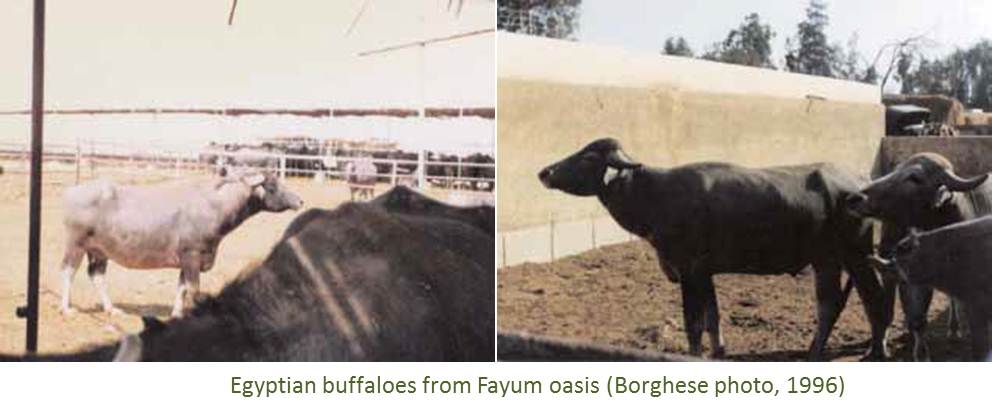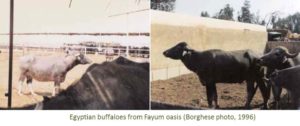Egyptian

Blackish grey in colour, horn form varies from lyre to sword-shaped. The head is long and narrow, the jaws are long and strong. Ears are long and dropping. The neck is rather long, thin and straight. The forelegs are rather short and heavy boned. Ribs are wide, deep and well sprung. The rump is sloping and the tail setting is low.

Height at withers of adult male is 178 cm, body weight is 600 kg.
Height at withers of adult female is 144 cm, body weight is 500 kg.
Distribution: All over the country, mainly in peri-urban areas and the Nile delta.
Husbandry : The farmer keeps manure in a solid state inside the animal enclosure. The solid manure is taken twice a year and spread in the fields before planting. The animals are slaughtered only in slaughterhouses, following the Islamic practice of cutting the jugular vein. Milking is done by hand, twice a day, mainly by women. Average slaughter weight is 500 kg, at the age of 18-24 months. Carcass yield is 51 percent. Overall growth rate is 700 g/day.
Milk yield : 1200-2100 kg
Milk fat : 6.5-7.0 percent
Products: The following cheeses are produced with the addition of cow milk: Domiati, Karish,Mish, Rahss.
Sources: El Kirabi, 1995; Nigm, 1996; Ragab and Abdel Salam, 1963; Mokhtar, 1971; Askar et al., 1973; Borghese, 2005.
